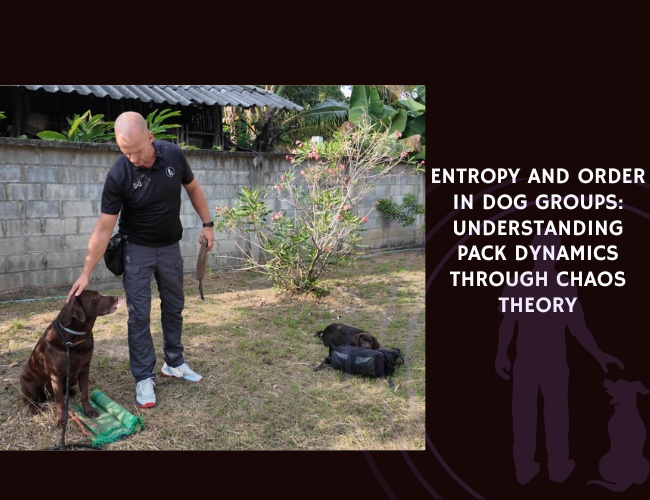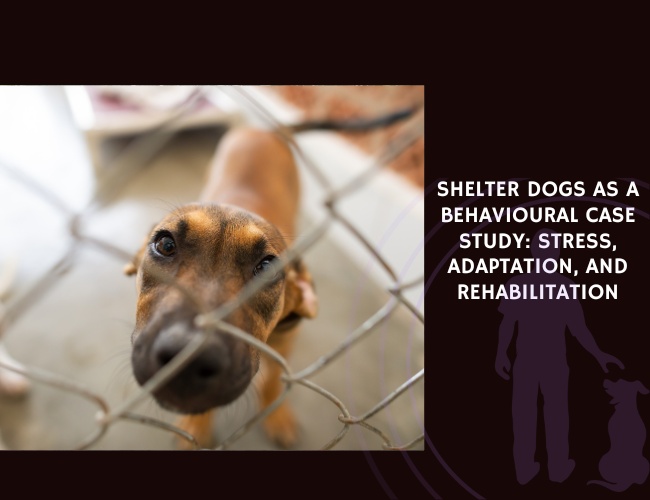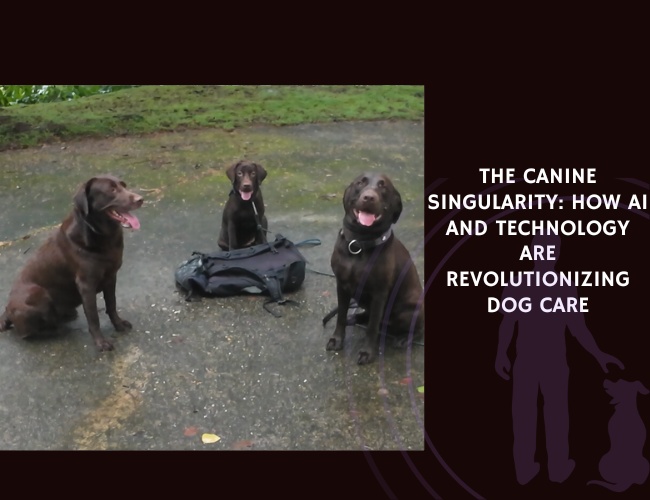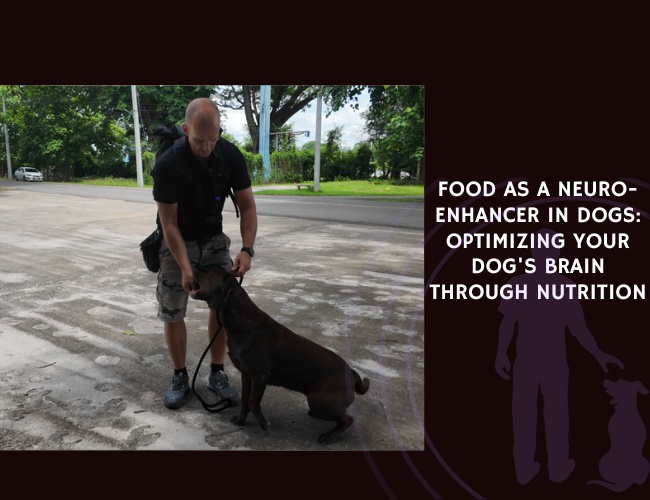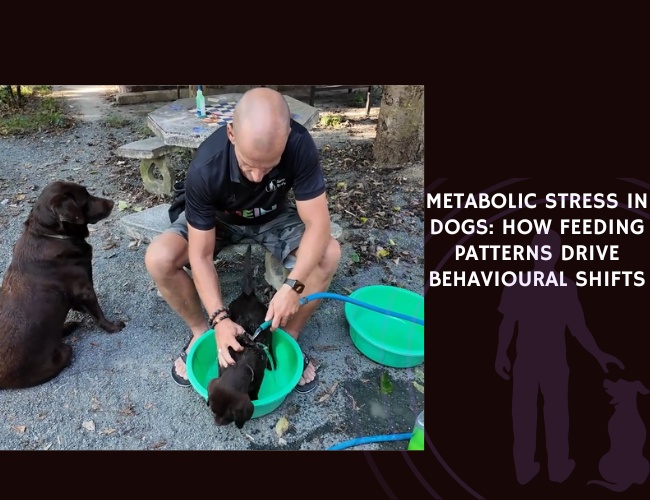Introduction: When Science Meets Your Living Room Pack
Have you ever watched your multi-dog household shift from peaceful coexistence to sudden chaos over a dropped treat? Or noticed how your calm morning walk transforms into coordinated pack behavior when a squirrel appears? These fascinating transformations aren’t random—they’re windows into the complex mathematical patterns that govern how dogs interact in groups. By understanding these patterns through the lens of chaos theory and entropy, we can better predict, manage, and nurture harmonious relationships among our furry friends.
The intersection of chaos theory and canine behavior might seem like an unlikely pairing, but it offers profound insights into why small actions—a subtle growl, a shifted posture, or even a prolonged stare—can cascade into dramatic changes in group dynamics. This isn’t just academic curiosity; it’s practical knowledge that can transform how we understand multi-dog households, manage shelter environments, and approach training from a systems perspective.
Nonlinear Social Interactions: The Butterfly Effect in Your Pack
Understanding Small Perturbations with Big Consequences
You might notice how a single bark from your usually quiet dog can instantly change the entire atmosphere of your home. This phenomenon, known as the “butterfly effect” in chaos theory, explains how minor behavioral perturbations cascade through dog groups like ripples in a pond—except these ripples can become tidal waves. In nonlinear systems like dog packs, the relationship between cause and effect isn’t proportional. A tiny trigger can lead to massive behavioral shifts.
The cascade typically follows this pattern:
- Initial perturbation (subtle behavioral signal)
- Recognition and response from nearby dogs
- Amplification through group dynamics
- Emergence of new behavioral state
Consider this: when your senior dog gives a barely perceptible lip curl while eating, it might seem insignificant. But this micro-signal can trigger a chain reaction—the younger dog backs away, changing the spatial dynamics, which causes the third dog to investigate, potentially escalating into resource guarding behaviors across the entire group. These cascading effects mirror what researchers observe in neural circuits, where small oscillations can induce complete dynamical reconfigurations.
Dominance Hierarchies as Strange Attractors
Did you know that what we call “dominance” in dog groups might actually be better understood as a mathematical attractor state? Traditional thinking views hierarchies as rigid structures, but chaos theory reveals something far more nuanced and dynamic. Your dogs’ social structure functions like a strange attractor—a pattern the system returns to despite constant fluctuations and minor disturbances.
This means the pecking order in your home isn’t fixed like a corporate org chart. Instead, it’s a fluid system that wobbles around a recognizable pattern. Dogs constantly negotiate and renegotiate their positions through countless micro-interactions. The hierarchy persists not because it’s unchangeable, but because it represents a stable configuration that the group naturally gravitates toward—much like how water finds its level.
Key characteristics of hierarchical attractors:
- Resistance to minor perturbations
- Predictable return patterns after disruption
- Context-dependent flexibility
- Multiple stable configurations possible
Research on sooty mangabeys demonstrates this beautifully—while their overall group composition showed high entropy (unpredictability), their dyadic relationships remained surprisingly stable and predictable. Your multi-dog household likely exhibits similar patterns, with overall chaos masking underlying stable relationships.
Feedback Loops: The Hidden Controllers of Pack Stability
Every interaction between your dogs involves feedback loops that either escalate or de-escalate situations. Understanding these loops gives you powerful insight into managing group dynamics. Positive feedback loops can spiral situations out of control—a growl leads to a counter-growl, then to posturing, potentially ending in conflict. But negative feedback loops act as natural brakes, preventing total chaos.
Positive feedback escalation looks like:
- Tension building through matched aggressive signals
- Competitive arousal during play
- Excitement feeding between dogs during doorbell reactions
- Resource competition intensifying through proximity
Negative feedback stabilization includes:
- Appeasement gestures diffusing tension
- Play bows resetting intense interactions
- Calming signals from confident dogs
- Spatial separation reducing competition
Wolves, our dogs’ ancestors, demonstrate masterful use of negative feedback through post-conflict behaviors. After disputes, they engage in specific reconciliation behaviors that restore relationships and reduce lingering aggression. Your dogs likely have their own versions—perhaps the guilty party bringing a toy as a peace offering, or engaging in mutual grooming after a spat. 🐾
Entropy and Order in Group Behaviour: Measuring the Chaos
Quantifying Pack Predictability Through Entropy Measures
Entropy isn’t just a physics concept—it’s a powerful tool for understanding your dogs’ social dynamics. In behavioral systems, entropy measures the unpredictability and variability of interactions. High entropy means chaotic, hard-to-predict behaviors, while low entropy indicates structured, predictable patterns. Think of it as measuring the “social temperature” of your pack.
Just as researchers use Shannon entropy to analyze heart rate variability in dogs under stress, we can conceptually apply entropy thinking to social behaviors. A pack with high social entropy might show:
- Unpredictable interaction patterns
- Frequent role reversals
- Inconsistent responses to stimuli
- Variable spacing and movement patterns
Conversely, low entropy groups display:
- Predictable interaction sequences
- Stable role assignments
- Consistent behavioral responses
- Coordinated movements and spacing
Practical entropy indicators in your home:
- Morning routine predictability (who goes out first?)
- Feeding time dynamics (consistent positions?)
- Toy sharing patterns (predictable trades?)
- Sleeping arrangements (stable or variable?)
By observing these patterns, you’re essentially conducting entropy analysis on your pack. The goal isn’t zero entropy (that would be robotic), but rather finding the sweet spot where there’s enough predictability for comfort yet enough variability for healthy adaptation.
Critical Thresholds: When Disorder Becomes Order
There are magical moments when chaotic dog groups suddenly snap into organized behavior—like when scattered dogs instantly form a coordinated pack upon detecting prey. These phase transitions occur at specific thresholds where disorder transforms into emergent order. Understanding these thresholds helps predict when your peaceful home might erupt into chaos, or when chaos might resolve into harmony.
Research on collective swarm behavior identifies critical points where systems transition between states. In dog groups, these thresholds might involve:
- Group size dynamics: Adding a fourth dog to a stable trio might push past a critical threshold
- Resource scarcity: When resources drop below a certain level, cooperation shifts to competition
- Arousal levels: There’s a tipping point where play becomes too intense and shifts to conflict
- Space constraints: Below a certain square footage per dog, stress behaviors emerge
You might notice these transitions during specific scenarios. Perhaps your dogs peacefully share the couch until someone tries to squeeze into that last tiny spot—suddenly, the entire arrangement collapses into musical chairs. That’s a threshold being crossed, transforming order into temporary chaos before a new stable configuration emerges.
Environmental Factors Altering Entropy Levels
Your pack’s entropy levels aren’t fixed—they fluctuate based on numerous factors. Larger groups inherently generate higher entropy due to exponentially more possible interactions. But it’s not just about numbers. Breed composition profoundly impacts social entropy. Imagine the difference between three Border Collies (likely to show coordinated, low-entropy herding behaviors) versus a Husky, a Beagle, and a Chihuahua (each marching to their own drummer, creating high-entropy chaos).
Factors influencing pack entropy:
- Breed-specific tendencies: Herding breeds often create more structured, low-entropy groups
- Age demographics: Mixed-age groups show different entropy than same-age groups
- Resource abundance: Scarcity increases entropy through competition
- Environmental enrichment: Boredom increases chaotic behaviors
- Human presence: Your presence often acts as an entropy reducer
Research on Beagle aging patterns reveals how demographic factors within a population alter behavioral patterns. Similarly, your pack’s entropy will shift as members age, with senior dogs often acting as entropy reducers through their calming influence. 🧠

Adaptive Dynamics: How Packs Reshape After Disruption
Reorganization Patterns Following Pack Changes
When you introduce a new dog, lose a pack member, or experience major conflicts, your group doesn’t just randomly reshuffle—it follows predictable reorganization patterns. These adaptations reflect the system’s attempt to find a new equilibrium, much like water finding its level after disturbance. The reorganization process typically unfolds in phases, each with distinct characteristics and challenges.
Phase 1: Initial Disruption (Days 1-7) The system experiences maximum entropy. Dogs exhibit:
- Increased vigilance and stress signals
- Exploratory behaviors toward newcomers
- Testing of existing boundaries
- Heightened resource awareness
Phase 2: Negotiation Period (Weeks 2-4) Active restructuring occurs through:
- Ritualized conflicts establishing new boundaries
- Formation of temporary alliances
- Spatial reorganization (sleeping spots, feeding positions)
- Communication pattern adjustments
Phase 3: Stabilization (Months 2-3) New patterns solidify:
- Emergence of modified hierarchy
- Establishment of new routines
- Reduction in conflict frequency
- Return to baseline stress levels
This reorganization mirrors concepts from resilience research, where systems adapt to adverse experiences while maintaining core functions. Your dogs aren’t just randomly adjusting—they’re following deep evolutionary patterns for group reformation.
Resilience Mechanisms Preventing Social Collapse
What prevents your multi-dog household from descending into permanent chaos during stressful times? Built-in resilience mechanisms act as social shock absorbers, preventing total collapse even under significant pressure. These mechanisms have evolved over millennia of pack living and remain active in our domestic dogs.
Primary resilience mechanisms include:
Social Bonds as Stabilizers: Deep friendships between specific dogs act like structural supports in a building. Even when the group faces stress, these pair bonds maintain stability. You might notice your bonded pair sleeping together more during upheaval, providing mutual emotional regulation.
Mediator Dogs: Some dogs naturally assume peacekeeper roles, intervening in conflicts before they escalate. These individuals, often middle-ranking dogs with high social intelligence, perform “policing” behaviors—stepping between tense dogs, redirecting attention, or initiating play to defuse situations.
Ritualization of Conflict: Dogs have evolved elaborate rituals that allow conflict resolution without actual fighting. The formal play bow, exaggerated yawns, and deliberate look-aways all serve as circuit breakers in escalating tensions.
Stress Redistribution Networks: Rather than one dog absorbing all stress, packs distribute emotional load across members. This mirrors research on social support in chronic illness, where networks buffer individual stress impacts.
Studies on cardiovascular adaptability in mice show that biological systems can develop resilience through environmental factors like diet. Similarly, environmental management in multi-dog homes—consistent routines, adequate resources, and stress reduction strategies—builds systemic resilience. 😄
Rapid State Transitions: From Cooperation to Conflict
Perhaps nothing illustrates chaos theory in dog groups better than those lightning-fast transitions from peaceful cooperation to sudden aggression. One moment your dogs are lounging together; the next, they’re in a tense standoff over seemingly nothing. These rapid shifts occur when the system crosses bifurcation points—critical junctures where small changes trigger dramatic state transitions.
Understanding bifurcation helps predict and prevent conflicts:
- Pre-bifurcation signals: Subtle tension increases, micro-aggressions, resource positioning
- The bifurcation point: The exact moment when cooperation becomes unsustainable
- Post-bifurcation cascade: Rapid escalation following the crossing point
- New equilibrium establishment: Settlement into conflict or return to cooperation
These transitions mirror observations in prey-predator models where seasonal variations lead to chaotic behavior. In your pack, “seasonal” variations might be:
- Hormonal cycles affecting mood
- Weather changes impacting exercise levels
- Schedule disruptions altering routine predictability
- Visitor presence changing group dynamics
By recognizing approaching bifurcation points, you can intervene before the system tips into conflict, maintaining the cooperative state through strategic management.
Chaotic. Fluid. Predictable.
Small signals spark big shifts. A single bark, glance, or lip curl can ripple through a group, reshaping the entire atmosphere. In pack dynamics, the smallest perturbation can trigger massive change.
Order emerges from chaos. What appears as conflict or randomness often resolves into patterns of stability. Dogs negotiate constantly, yet the group finds balance through these invisible rules.

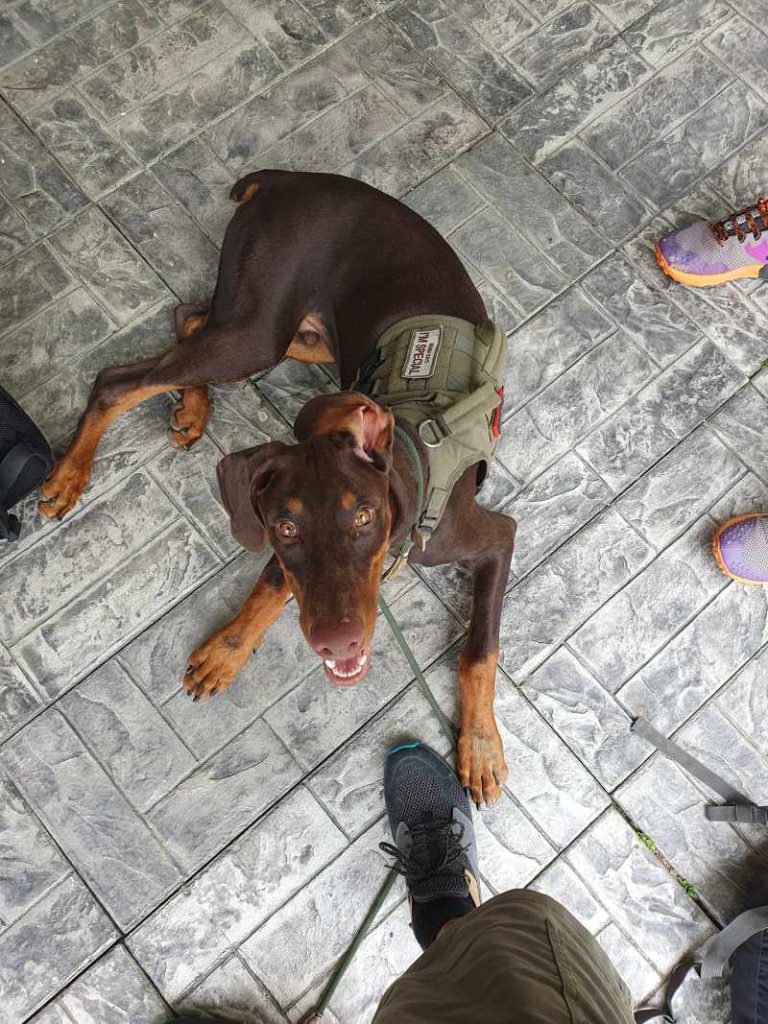

Hierarchy is dynamic stability. Dominance isn’t rigid—it’s a strange attractor the pack gravitates toward. Roles flex and flow, but the system always settles into a familiar rhythm of order.
Comparative Models: Learning from Nature’s Other Systems
Universal Patterns Across Species
The chaotic beauty of your dog pack isn’t unique—it mirrors patterns found throughout nature. From flocking birds to ant colonies, from fish schools to human crowds, the same mathematical principles govern collective behavior. This universality suggests that understanding one system helps us understand others, including our canine companions.
Bird flocks demonstrate remarkable coordination without central control, achieved through simple local rules:
- Maintain minimum distance from neighbors
- Align direction with nearby birds
- Stay with the group
Your dogs follow surprisingly similar rules:
- Maintain personal space bubbles
- Synchronize activities (sleeping, playing, alerting)
- Preserve group cohesion
The dynamical renormalization group approach used to model natural swarms reveals how local interactions create global patterns. When your dogs suddenly coordinate their barking at a passing dog, they’re demonstrating the same emergent organization seen in starling murmurations—no single dog commands the group, yet they achieve remarkable synchronization.
Ant colonies offer another parallel. Their pheromone trails creating efficient paths mirror how your dogs establish movement patterns through your home. The well-worn path from dog bed to water bowl to favorite window perch isn’t random—it’s an optimized route emerging from countless iterations, just like ant highways.
Agent-Based Models: Simulating Pack Behavior
Scientists increasingly use agent-based models (ABMs) to simulate complex social systems, and these tools offer fascinating insights into dog pack dynamics. Each “agent” (dog) in the model follows simple rules, yet complex group behaviors emerge. These models help us understand how individual personality traits scale up to group-level phenomena.
Basic rules that generate complex pack behaviors:
- Personal space maintenance (approach/avoid based on distance)
- Resource value assessment (compete/defer based on hunger and dominance)
- Social bonding dynamics (affiliate with preferred partners)
- Emotional contagion (mirror arousal levels of nearby dogs)
- Environmental response (react to stimuli based on individual thresholds)
When researchers run these simulations thousands of times with slight variations, patterns emerge that match real-world observations. For instance, models predict that groups with mixed personality types (bold and shy individuals) show more stable, adaptive dynamics than homogeneous groups—exactly what we see in successful multi-dog households.
These models also reveal non-intuitive insights. For example, removing the most aggressive dog doesn’t always reduce group conflict—sometimes it destabilizes established patterns, leading to more chaos as others compete to fill the vacuum. This explains why removing a “problem dog” from a shelter group sometimes worsens overall dynamics.
Behavioral Energy States and Thermodynamic Parallels
Here’s a mind-bending concept: your dogs’ behavioral states might follow thermodynamic principles similar to those governing energy in physical systems. Just as molecules have different energy states, your pack exhibits varying “behavioral energy states” that influence their entropy and predictability.
High behavioral energy states characterized by:
- Elevated arousal and vigilance
- Rapid behavioral transitions
- High entropy (unpredictability)
- Increased metabolic demands
- Greater sensitivity to perturbations
Low behavioral energy states showing:
- Calm, relaxed demeanor
- Slow, deliberate movements
- Low entropy (predictability)
- Efficient energy use
- Resistance to disturbance
The fascinating parallel to thermodynamics appears in energy-entropy compensation. When behavioral energy increases (like during exciting play), entropy also rises (unpredictable actions). But the system seeks balance—high-energy states are unsustainable, so dogs naturally cycle back to lower energy, lower entropy states for recovery.
This explains why intense play sessions are followed by synchronized napping—the pack collectively transitions from high to low energy states. Understanding these cycles helps you:
- Predict when chaos is likely (high energy states)
- Recognize natural recovery periods
- Manage energy levels to prevent behavioral problems
- Time training for optimal attention (moderate energy states)
Research on molecular transport through nanochannels reveals similar energy-entropy relationships in physical systems. Your living room might not be a nanochannel, but the principles governing how your dogs flow through doorways during excitement follow remarkably similar patterns! 🐾

Applications to Welfare and Training: From Theory to Practice
Predicting Multi-Dog Household Conflicts
Understanding chaos theory transforms how we approach conflict prediction in multi-dog homes. Instead of waiting for problems to explode, you can now identify the subtle warning signs of approaching bifurcation points. By recognizing your pack’s unique attractor states and sensitive dependencies, you become capable of incredibly nuanced management.
Early warning indicators to monitor:
- Changes in sleeping arrangements (entropy increase in spatial organization)
- Alterations in greeting rituals (disruption of established patterns)
- Modifications in play intensity (approaching critical thresholds)
- Resource positioning behaviors (pre-conflict reorganization)
- Increases in displacement behaviors (system stress indicators)
Consider keeping a simple behavior log noting:
- Daily interaction patterns (who plays with whom?)
- Resource sharing dynamics (peaceful or tense?)
- Spatial preferences (consistent or changing?)
- Arousal triggers and recovery times
Patterns will emerge revealing your pack’s unique dynamics. You might discover that conflicts predictably occur when certain conditions align—perhaps when the barometric pressure drops (affecting mood), combined with missed walks (energy accumulation), and visitors arriving (system perturbation). This isn’t superstition; it’s recognizing how multiple variables push your system toward chaos.
The household chaos research linking environmental disorder to family stress provides a perfect parallel. Just as cluttered, unpredictable human environments increase conflict, chaotic dog environments—inconsistent schedules, unclear boundaries, unpredictable resources—push packs toward instability.
Entropy Reduction Strategies for Shelters and Kennels
Shelters face unique challenges with constantly changing populations and stressed individuals creating high-entropy environments. By applying entropy reduction strategies, facilities can dramatically improve welfare outcomes. The goal isn’t eliminating all unpredictability (that would be institutionalization) but managing entropy at optimal levels for wellbeing.
Systematic entropy reduction approaches:
Temporal Consistency: Establishing predictable daily rhythms immediately reduces entropy. Dogs quickly learn that breakfast arrives at 7 AM, playgroups happen at 10 AM, and quiet time starts at 8 PM. This temporal predictability acts as an entropy sink, absorbing chaos from other system areas.
Spatial Organization: Creating consistent spatial zones—feeding areas, elimination zones, rest spaces, play areas—provides physical structure that reduces behavioral entropy. Dogs know where specific activities occur, reducing anxiety and conflict over space use.
Social Stability: While population changes are inevitable, maintaining stable “anchor dogs” who know the routines helps integrate newcomers. These experienced dogs demonstrate appropriate behaviors, essentially teaching newcomers the local “rules,” thereby reducing overall system entropy.
Sensory Environment Management: Controlling auditory, visual, and olfactory stimuli prevents sensory overload that increases behavioral entropy. This might mean:
- Sound-dampening materials reducing noise cascade effects
- Visual barriers preventing constant vigilance
- Scent management through proper ventilation and cleaning protocols
- Lighting that follows natural circadian rhythms
Research shows that fear during veterinary visits significantly impacts dog welfare, with environmental factors playing crucial roles. The same principles apply to shelter environments—reducing environmental entropy directly reduces stress-related behaviors.
Measuring success through entropy metrics:
- Decreased variation in daily activity patterns
- More predictable social interactions
- Reduced stress indicators (cortisol, repetitive behaviors)
- Improved adoption outcomes (calmer presentation)
Revolutionary Training Approaches: Beyond Linear Dominance
Traditional dominance-based training assumes linear relationships—more dominance equals more control. But chaos theory reveals this framework’s fundamental flaw: dog social systems are nonlinear, dynamic, and context-dependent. A revolutionary approach embraces this complexity, working with natural system dynamics rather than imposing rigid hierarchies.
Nonlinear training principles:
Sensitive Dependency Recognition: Small interventions at the right moment have massive impacts. Instead of major corrections, trainers identify sensitive points where minimal input creates maximum positive change. This might mean a subtle body position shift that prevents resource guarding, rather than a dramatic intervention after guarding begins.
Attractor State Management: Rather than forcing specific behaviors, trainers shape the system’s attractor states. By reinforcing calm, cooperative configurations, these become the default patterns the pack returns to naturally. You’re not commanding obedience; you’re sculpting the mathematical landscape of possible behaviors.
Feedback Loop Optimization: Modern trainers become feedback loop engineers, strengthening beneficial loops while dampening harmful ones. For example:
- Amplifying calm behavior through environmental management
- Interrupting excitement escalation before critical thresholds
- Creating positive cascade effects through strategic reinforcement
- Building resilience through controlled challenges
Emergent Learning Facilitation: Instead of teaching individual commands in isolation, trainers create conditions where desired behaviors emerge naturally from group dynamics. This might involve:
- Structuring play to encourage turn-taking
- Managing resources to promote sharing
- Designing spaces that naturally encourage calm behavior
- Using experienced dogs as behavioral models
The research on age-related behavioral changes emphasizes how training must adapt to complex, multi-system realities. A nonlinear approach acknowledges that the same intervention might have completely different effects depending on:
- Individual dog’s current state
- Pack’s collective energy level
- Environmental conditions
- Historical context of previous interactions
- Presence or absence of specific pack members
This approach also validates the emotional realities of dog-human relationships. Understanding dog-parent guilt and attachment styles reveals that human emotional states significantly impact pack dynamics. Trainers must consider the entire system—dogs, humans, environment—as an interconnected web where changes in one area ripple throughout.
Practical implementation strategies:
- Map Your Pack’s Attractors: Identify stable behavioral patterns your dogs naturally return to
- Identify Leverage Points: Find where small changes yield large results
- Design Feedback Systems: Create environmental and social structures that automatically reinforce desired behaviors
- Embrace Beneficial Chaos: Allow controlled uncertainty that promotes adaptability
- Build System Resilience: Strengthen the factors that help your pack recover from disruptions
The multi-system approach validates both scientific understanding and emotional intelligence, moving beyond simplistic dominance hierarchies toward nuanced, dynamic management strategies that honor the complex realities of dog social systems. 🧠
Conclusion: Embracing the Beautiful Chaos of Canine Companionship
As we’ve explored the fascinating intersection of chaos theory and dog behavior, you’ve discovered that the seeming randomness in your multi-dog household actually follows profound mathematical patterns. From butterfly effects in daily interactions to strange attractors in social hierarchies, from entropy measures predicting conflicts to resilience mechanisms preventing social collapse, these concepts aren’t just theoretical—they’re practical tools for understanding and improving life with multiple dogs.
The journey through nonlinear dynamics, entropy analysis, and complex systems thinking reveals that our dogs’ social lives are far richer and more sophisticated than traditional linear models suggest. Your pack isn’t a simple hierarchy but a dynamic, adaptive system constantly balancing between order and chaos, predictability and surprise, stability and change. This dance between entropy and organization isn’t a flaw to be fixed—it’s the fundamental nature of social life, allowing for both security and adaptability.
Understanding these principles transforms how we approach everything from introducing new dogs to managing shelter environments, from preventing conflicts to designing training programs. We move from trying to control chaos to working with it, from imposing rigid structures to nurturing beneficial patterns, from reacting to problems to predicting and preventing them. This shift represents not just better management techniques but a fundamental reimagining of our relationship with our canine companions.
The practical applications extend far beyond individual households. Shelters can reduce stress through entropy management, trainers can develop more effective nonlinear approaches, and researchers can better model and predict pack behaviors. But perhaps most importantly, this understanding deepens our appreciation for the remarkable beings sharing our homes. Every interaction, from morning greetings to bedtime settlements, reflects millions of years of evolutionary refinement in social living.
Is this approach right for you and your pack?
If you’re ready to see beyond simple dominance hierarchies, if you’re curious about the hidden patterns in your dogs’ behaviors, if you want to predict and prevent problems rather than just react to them—then embracing chaos theory and entropy thinking will revolutionize your multi-dog management. You’ll find yourself noticing subtle dynamics you previously missed, predicting changes before they occur, and intervening at exactly the right moments with minimal effort for maximum benefit.
The beauty lies not in achieving perfect order—that would be impossible and undesirable—but in understanding and working with the natural ebb and flow of social dynamics. Your dogs are already living these principles; now you can join them in this dance between chaos and order, creating a more harmonious, predictable, yet wonderfully dynamic pack life.
Next, we’ll explore how these principles apply to specific breed combinations and how genetic predispositions influence pack entropy levels—because understanding the chaos is just the beginning of mastering the beautiful complexity of canine social systems. 🧡

